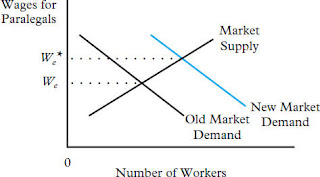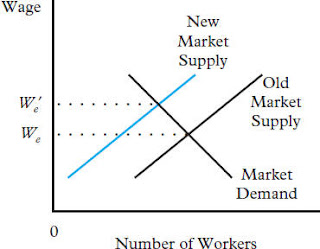It is a special market, the conditions under which services are rented can be as important as the price. it means for labor market, non pecuniary factors are important, such as :
- work environment
- personality of manager
- perception of fair treatment
- flexibility of working house
Nonetheless, it is still a market
- institutions such as employment agencies facilitate contact between buyers and sellers of labor resources
- info about price and quality is exchanged
- formal and informal contracts exists, regulating time and compensation
Positive economic model
- theory of behavior whereby people respond positively to benefits and negatively to costs
Scarcity - we have to make trade offs
Rationality - utility max
(correct vs incorrect)
Normative economic model
- based on some underlying values, what ought to exist
min wage, immigration, welfare program
(good vs bad)
culture is a system of values and norms
values are abstract ideas about what a group believes to be good, right, desirable
norms are social rules and guidelines that prescribe appropriate behavior in situations
two types of transactions
- voluntary , mutually beneficial
- mandatory, based on policy or law, even though one or more parties might lose out, eg. tax
five types of market failure
- ignorance
- transaction barriers
- externalities
- public goods, free rider problem
- price distortion, eg. min wage
gov intervention can correct market failures, such as intervene to promote socially beneficial transactions
Efficiency vs equity
- What is efficient is not necessarily equity. Normative econ stress efficiency, because it can be analysed scientifically. For equity, seek guidance from political systems, not market.
Labor Market Overview
A market with buyers and sellers
Labor force and employment
unemployment rate = number of ppl unemployment /number of ppl in labor force
Wage, earnings, compensation and income
wage rate * unit of time = earnings
earnings + employment benefits (in-kind or deferred) = total compensation
- payment in kind: employer provided health care or insurance
- deferred: social security
total compensation + unearned income (interest, dividend) = income
How it works
two effects
- scale effect: wage ↑, price ↑, product demand ↓ -> employment ↓
- substitution effect: wage ↑, capital intensive production ↑ -> emp ↓
(substitute labor and machine, product market stays the same)
other effects
- demand for product ↑ -> hire more labor
higher demand at any price -> demand for labor ↑
- supply of capital, when capital price ↓
a. scale effect dominates
- more machine -> hire more workers to run the machine -> higher labor demand
b, substitute effect dominates
- same product demands -> substitute labor with machines
Thus, no clear prediction from econ theory
Supply of Labor
- market supply
if salary in other professions remain the same, more people want to become lawyers if lawyer's wages rise
if wage of insurance up, supply of paralegals comes down
- supply to firms
individual firms are wage takers - pay market wage
Wage determination
market clearing wage
w1 -> demand ↑ S ↓
w2 -> demand ↓ S ↑
market clearing wage - wage which supply = demand. at We, everyone is satisfied
The market clearing wage becomes going wage in the market.
disturbing the equilibrium
- demand shift
eg. if there is new regulation, more lawyers need
- supply shift
workers decrease, market wage goes up
barriers to adjustment
- workers: skill change, cost of moving
- employers: search and training cost, firing cost, wage cost
- non market forces: law constraining individual
customs, culture
barrier of adjustment is the reason of unemployment
Discussion
market adjust more quickly for rising wages, because forces keep wages above market
market adjust slowly to decreasing wages, because labor union may protest
- the above market wages implies S of labor greater than D of labor, there will be unemployment
Applications of the theory
company overpay with above mkt wages
- if lower wages (lower than We), less ppl want to work
at individual level, economic rent is the amount where one's wage exceeds one's reservation wage
- reservation wage is the wage below which worker would not want to work
for L0 workers, they receive economic rent of W2 - W0
- employer do not know the reservation wage , so they pay more
- hard to know the fair wage














No comments:
Post a Comment